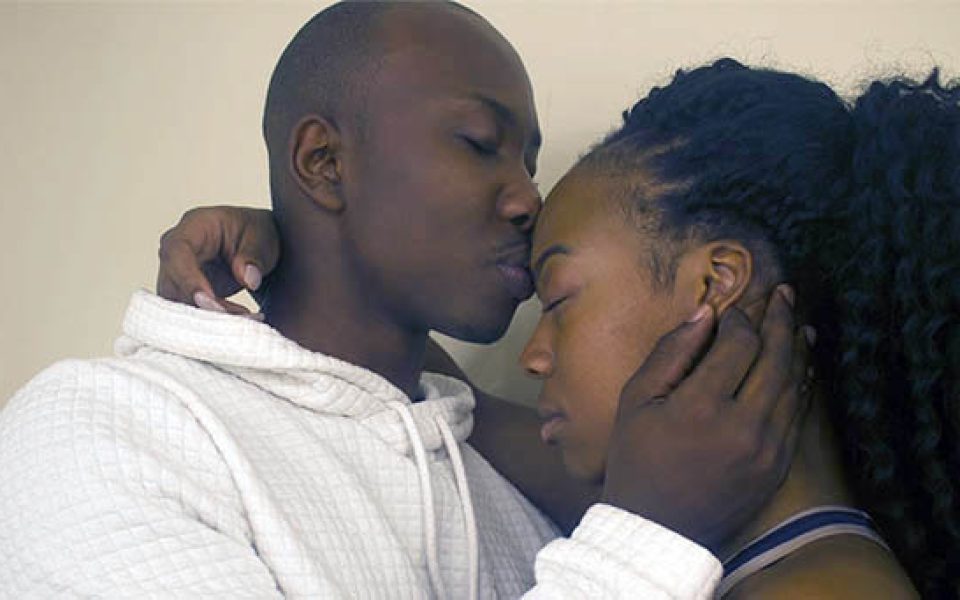When Oya runs, her legs start stirring a song in the air — legs that sing like a cricket’s, a song like a little lullaby.
“Oya in the air,” they say in San Pere, La. “Oya in the air.”
In Yoruba mythology, Oya is the goddess of wind and storms. In Tarell Alvin McCraney’s play In the Red and Brown Water, Oya is a young woman whose talent as a track runner gains the admiration of those around her and leads to a potential college scholarship. But when she misses her chance in order to care for her ailing mother, the storms in her life begin to take form.
Under new director Darius Omar Williams, the theater program at NC A&T University presents In the Red and Brown Water — the first play in McCraney’s trilogy the Brother/Sister Plays — during the last two weekends in April.
In his director’s notes, Williams praises the lyrical and innovative writing of McCraney, who recently won an Academy Award for Best Adapted Screenplay for Moonlight — a film based on his semi-autobiographical play In Moonlight Black Boys Look Blue. Williams lauds McCraney’s weaving together of Yoruba myth and the lives of marginalized African Americans in order to present the story of Oya and the earthly and spiritual worlds around her.
“One of the most prevalent questions that resonates in the play is: What do we as individual and collective beings do when we are caught in the middle of a storm that holds the potential to tailspin us into a tragic fate?” Williams writes.
For Oya — often referred to as “Oya girl” — the death of her mother, two stormy romances, an obsession with pregnancy and the paralysis of her impoverished Louisiana life brew this storm and lead to her tragic acts and fate.
The play’s most unique, experimental component arises in the characters’ stage directions — the italic lines in a script normally included to guide the actors in their nonverbal performances. But in McCraney’s play, the actors speak these lines, adding humor and a strange but effective depth to the characters and their storytelling.
The spoken stage directions extend beyond the common “Mama Moja enters” or “Shango exits” to lines that evoke more emotion within the character and likewise provide a greater audience understanding.
“Oya girl looks to the sky, finds no answers there,” Oya reveals when discussing death with a lover. Though Oya’s skyward gaze alone would have suggested her internalized emotions to the viewers, the audible stage direction furthers the viewers’ perception.
The component also adds a considerable amount of humor to the play, including lines such as one in a conversation between Oya and Aunt Elegua.
“Elegua stops and looks at her smart-ass goddaughter,” Aunt Elegua says during an altercation about the death of Oya’s mother.
Through Williams’ direction in their production on Sunday, the actors succeeded in combining their own physical and emotional performances with the undisguised stage directions that preceded their lines.
In his performance as Shango — a lover of Oya’s — Joseph Johnson aptly incorporated the stage directions into his character’s mood — cackling “Shango exits” in a humorous spirit, or presenting a more dangerous “Shango grins, a glint of war in his eyes” when encountering Oya’s other romantic partner.
As Mama Moja, Latrice Richardson provided great comedic timing to match the humorous aspects of the script. Richardson announced her stage direction: “Moja looks at him like ‘What I say?’” directly before addressing the character: “What I say??”
In the Red and Brown Water centers the idea of change, and the changes that never come are often as fateful as the ones that do; life takes Oya’s mother away but never brings Oya a child of her own. Yet despite the directness of its storytelling, the play avoids concise conclusions and limits clear understanding.
For the director, it seems, whether or not change comes — and whatever they happen to be — should not control one’s life. Rather, it’s how the change is faced.
Williams ends his director’s notes: “My sincere hope is that this production encourages us all to uphold ourselves in the light in spite of whatever agonies pulsate within us.”
Join the First Amendment Society, a membership that goes directly to funding TCB‘s newsroom.
We believe that reporting can save the world.
The TCB First Amendment Society recognizes the vital role of a free, unfettered press with a bundling of local experiences designed to build community, and unique engagements with our newsroom that will help you understand, and shape, local journalism’s critical role in uplifting the people in our cities.
All revenue goes directly into the newsroom as reporters’ salaries and freelance commissions.


Leave a Reply